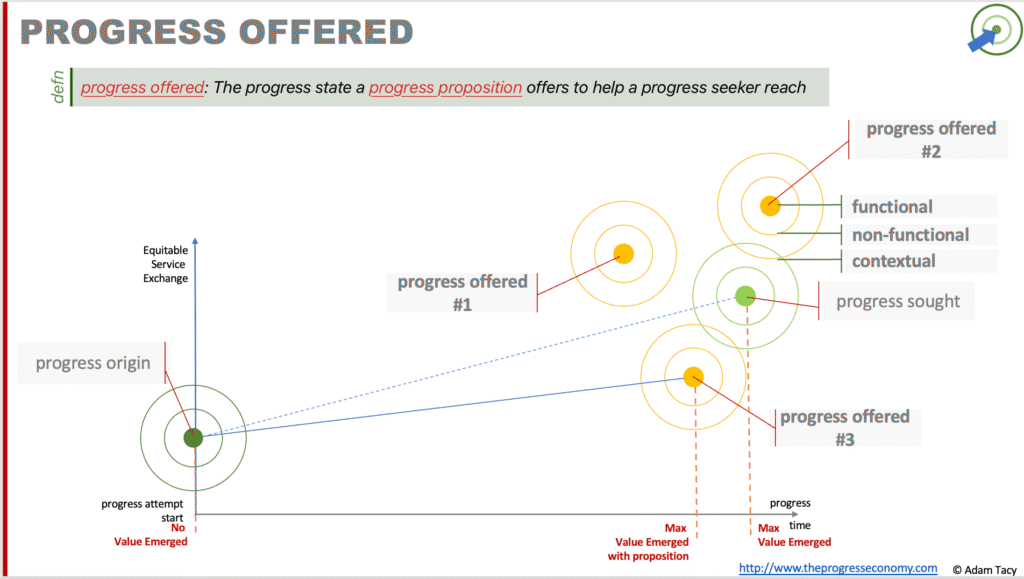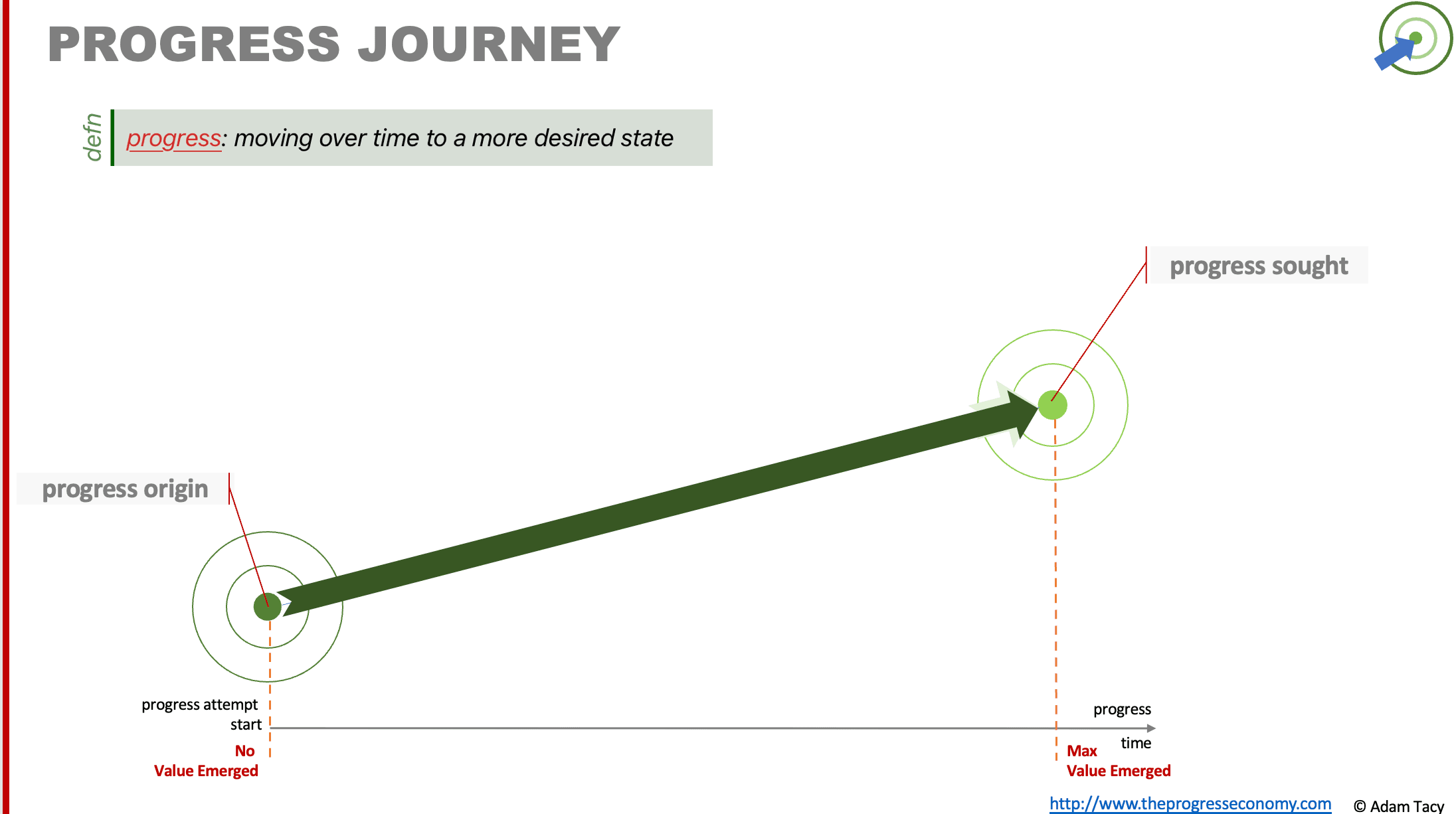The progrèss diagram underlines the progress economy. The basic version shows the simplistic case of a progress journey between a Seeker’s progress origin and their more desired progress state of progress sought. The progress states are represented as concentric circles to remind us of the three equally important elements: functional, non-functional and contextual.
We can visualise the diagram’s space as follows:
- horizontal: representing time, progress and emerged value
- vertical: progress journeys are drawn as sloping upwards lines by convention; vertical space is also used to bring clarity to diagram if there are multiple journey’s shown; and if the vertical space is labelled, then it notionally represents the height of the particular progress hurdle identified.
Such spacing allows us to visualise progress propositions compared to the Seeker’s journey. For example, the following progress diagram shows the progress offered of three propositions with the particular focus on equitable exchange hurdle (for simplicity: price).

Propositions 1 and 3 offer less progress than the Seeker’s progress sought; and proposition 2 offers more. Since the vertical is labelled, we can also say that proposition 2 costs more than proposition 1, which in turn costs more than proposition 3.
Gaps between a proposition’s origin/progress offered and a Seeker’s origin/progress sought represent both i) space to close during sales process and ii) innovation space. This is why we see sales and innovation as two sides of the same coin).
Since the horizontal also represents value (comparisons of progress) we label the start of a journey as “no value emerged” and at progress sought, “Max value emerged”. We can position the comparative named states – progress reached, progress remaining – on the progress diagram.

Let’s progress together through discussion…